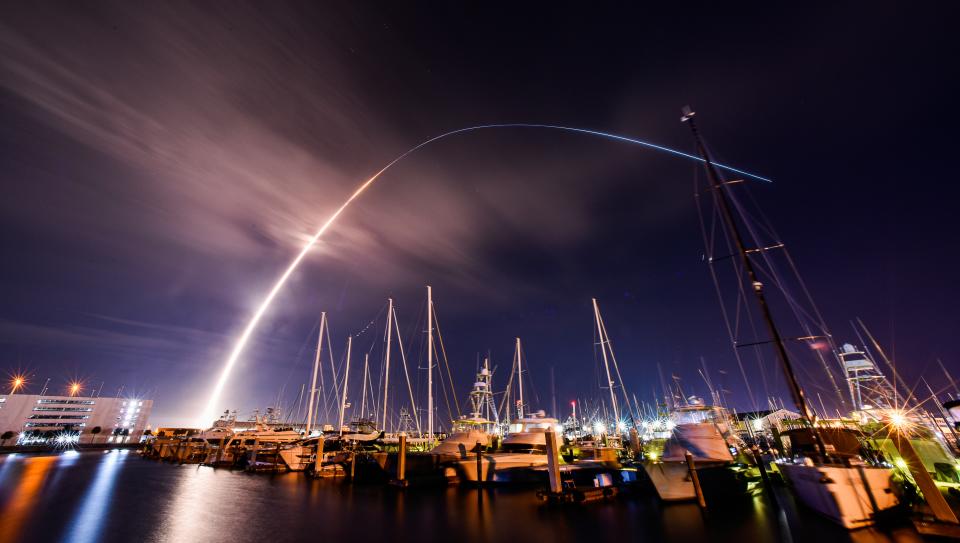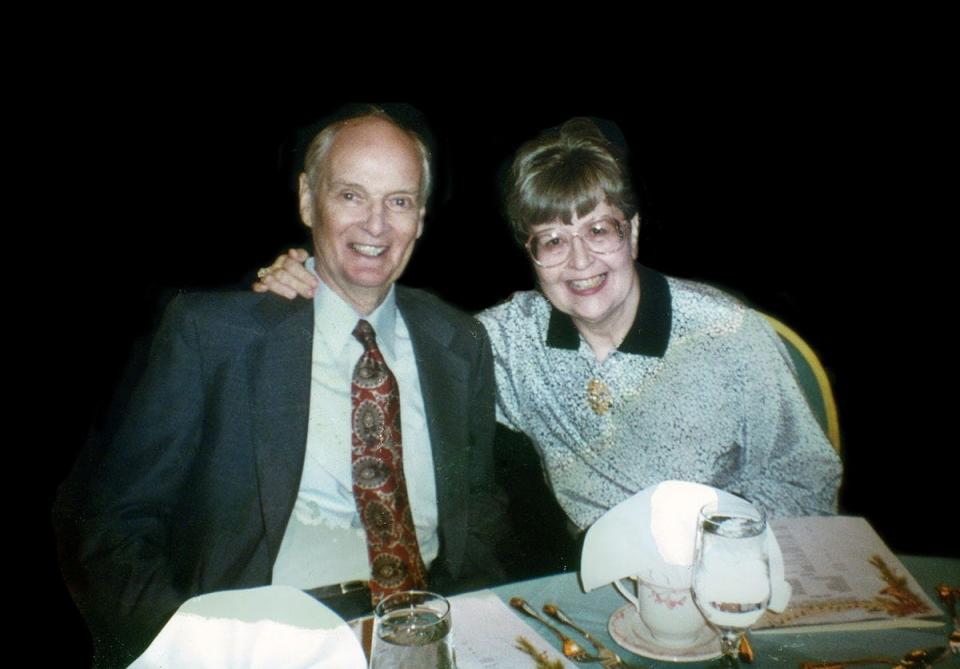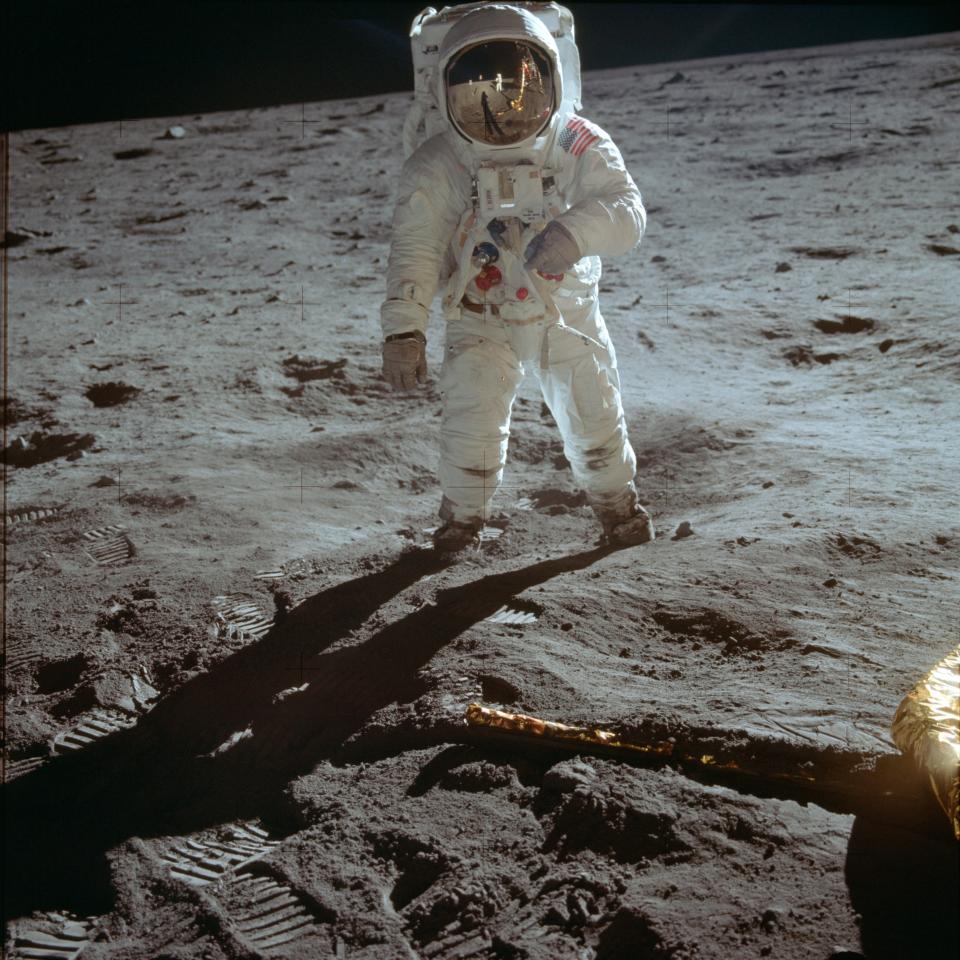Ashes of Embry-Riddle professor, Daytona museum grant writer headed for deep space
The historic Vulcan rocket that launched early Monday morning has a capsule containing the ashes and DNA of more than 200 people, including "Star Trek" creator Gene Rodenberry, George Washington and three other presidents.
While sending ashes into space isn't new − Celestius Memorial Spaceflights was established in 1994 − this capsule is bound for deep space, a first. And among the heavenly ashes will be those of two late Daytona Beach residents, David and Liliane Webb.

David Webb was, among many things, a widely respected space advocate who taught at Embry-Riddle Aeronautical University and the University of Central Florida. He was appointed by President Reagan (whose DNA is in the capsule with Webb's ashes) in 1985 to the National Commission on Space, where he, along with astronauts Buzz Aldrin, Neil Armstrong and Sally Ride, held hearings and produced a report, "Pioneering the Space Frontier."
His wife Liliane was grants writer for the Museum of Arts and Sciences in Daytona Beach.

"I'd like to think they would be thinking on the world with kindness and its ad astra per aspera (which means through hardships to the stars)," said Allie Hannigan, a space professional who lives in Redmond, Washington, and was mentored by the Webbs when she was entering the field.
"I think they see not just the hardships ... I think they would kind of think kindly of us − hope and light and to carry forward a future," Hannigan said.
The Webbs' close friend MoiraLyn Mefein, now of Port St. Lucie but at one time a copy editor for The News-Journal, worked with Hannigan and others to arrange to get some of the Webb's ashes on the Celestis capsule.
Hannigan has contacts from her experience at the International Space University, a school for which Webb served as the first board chair. Hannigan said she knew some of the Webbs’ ashes remained intact, so she put Mefein in touch with Celestis to arrange their transport to deep space.
The couple didn’t have children together, but each had two from previous relationships. All four gave permission for the ashes to be placed aboard the rocket, Mefein said.
Adventurer's interest turns to the cosmos
Raised at his parents’ home Curraghbawn, in County Tipperary, Ireland, David Webb was, as Mefien put it, “a hell of an adventurer,” before becoming passionate about space.
When he was 24, he and some friends built a small watercraft and sailed across the Atlantic from Ireland.
“They didn’t have equipment. They didn’t have a radio. They sort of had a backup engine in that they took a lawnmower motor and installed that backward,” she said, adding that she has photos from an Irish newspaper when they departed.
Webb raced motorcycles and automobiles and became an ice road trucker long before reality TV. He was one of two people tasked with using canoes to map the Arctic Red River in Canada’s Northwest Territories and kept a shop in the Arctic Circle.
He went to McGill University in Montreal, earning a bachelor’s degree in political science and a master’s in international relations, later earning a doctoral degree in international development and education at the University of Pittsburgh.
He had long been interested in space, but he said his life turned when, participating as a delegate in the first United Nations Conference on the Environment in 1972, there was great concern that overpopulation and an expanding developed world would “overwhelm the resources of the planet,” he told a PBS interviewer in 1989 in a video posted to YouTube.
The conference resulted in a paper, "The Limits to Growth," which Webb saw as a "dire, grim" approach to stopping progress.

"We were talking ... as if the planet was a finite, whole system in which man was forever encompassed and could never leave. We had already left it three years before," Webb said, in reference to 1969, when the United States sent three men to the surface of the moon.
'Changed my life'
It shocked Webb that the report did not include the possibility that humans could find ways to colonize the moon and other planets, so he asked the report's leading author, Aurelio Peccei, an Italian industrialist.
"He said something that changed my life and changed it radically," Webb said.
Peccei told him: "David, we have studied the universe and found it wanting. If you can prove to the contrary, go do it."
Webb took the bait and began studying space in 1974, the same year he met his second wife, Liliane. They moved to the United States, where he established the first graduate program in space studies at the University of North Dakota and later made his way to Florida, where he worked as a consultant and taught at UCF and Embry-Riddle.
Child refugee, linguist, author and grants writer
Liliane − a German immigrant born in 1931 − was as a child told to care for her younger brother and begin walking to find somewhere safe during World War II.
According to a biography on the Celistis website, she and her brother made it 200 miles to a farm where they worked until the war ended.
She went to school and became a linguist, fluent in German, French and English, and worked for the World Health Organization, among other institutions, before moving to the United States in 1957, marrying, having children and divorcing.
She also converted to Judaism and spent considerable time in Spain researching "The Marranos," a book she published in 1980 about Jews who pretended to be Roman Catholics during the Inquisition.
Liliane and David wed in 1974. After they came to Florida in the 1980s and settled in Daytona Beach, went to work as a grants writer at the Museum of Arts and Sciences.
Zach Zacharias, the museum's senior curator of history, remembered Liliane Webb as an effective grants writer.
"She was full of great ideas all the time," Zacharias recalled. "She was friendly, easygoing and she was a real pleasure to work with."
He was surprised to learn her ashes were in space, but said it made sense considering her husband's passion.
Liliane Webb died in 1999 at age 67. A couple of weeks later, Mefein wrote a tribute published in The News-Journal.
It described her as superb at finding grant opportunities for the arts, a subject for which she and Mefein shared a passion.
"Liliane was an expert at putting together just the right words, making exactly the right argument, to convince the often-jaded guardians of arts dollars that Daytona Beach deserved their attention and support," Mefein wrote.
Aisling go bragh
David Webb died in 2016, just shy of his 88th birthday.
The tribute on the Celestis website includes the phrase "aisling go bragh," which roughly translates from Gaelic-Irish to "dream to forever."
Hannigan said the future was a subject for which both David and Liliane Webb had a passion.
"I think they both were very realistic people firmly grounded in reality," she said. "But they had this vision of what could be and I think they ... had a genuine love for humanity."
She imagines them in space, looking down on the planet and urging Earthlings to keep going, keep striving to make things better.
New Exhibit: Pearl Harbor, World War II is featured at Daytona's Museum of Arts & Sciences
Stories of Hope: Embry-Riddle student grateful for Food Brings Hope Community
This article originally appeared on The Daytona Beach News-Journal: Vulcan rocket transporting ashes of Daytona Beach couple to deep space

